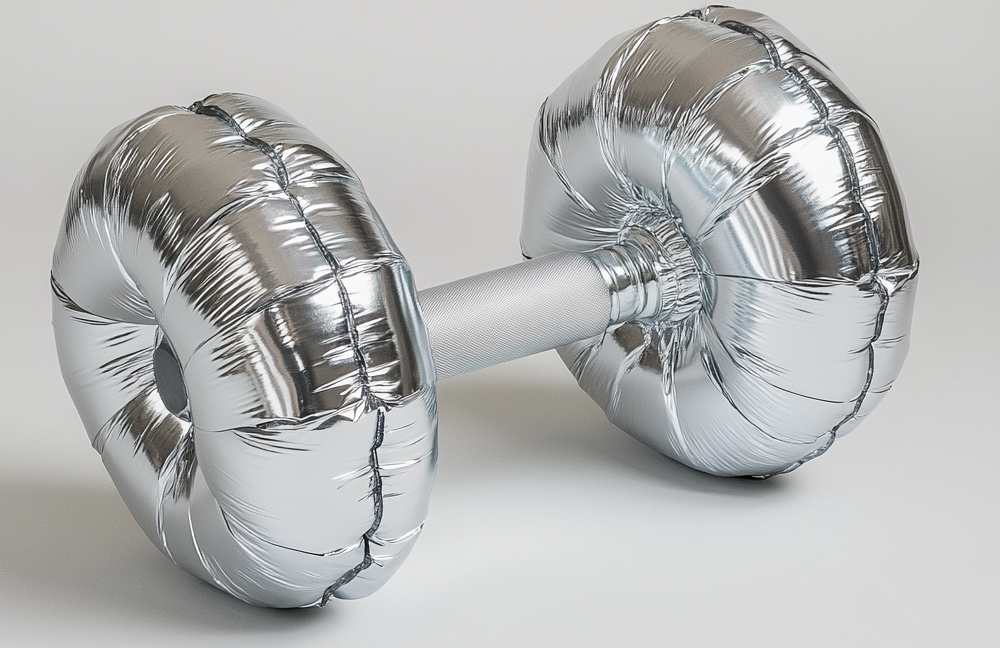Introduction
In this progressive overload how-to, we’ll break down what progressive overload is, why it’s crucial, and how you can incorporate it into your workout routine. From understanding the science behind it to discovering the best exercises and techniques, this article will equip you with everything you need to know to maximize your gains. Let’s get started!
1. What is Progressive Overload?
At its core, progressive overload is the practice of continuously challenging your muscles to do more over time. The idea stems from a simple biological principle: your body adapts to the stress it’s exposed to. To build muscle, you must gradually increase that stress so your muscles are forced to grow stronger and bigger to handle the new demands.
Progressive overload isn’t just about lifting heavier weights. While adding weight to your lifts is one way to apply the principle, there are several other methods. You can increase the number of repetitions, adjust your training volume, or even change the tempo of your movements to make exercises more challenging. For example:
- In week one, you might squat with 100 pounds for 8 reps.
- By week three, you could increase the weight to 110 pounds or aim for 10 reps with the same weight.
- Alternatively, you might slow down the descent of the squat to increase time under tension.
This gradual increase in difficulty sends a signal to your body that it needs to grow stronger, build more muscle fibers, and improve endurance. The result? Consistent gains in strength and size.
How Progressive Overload Works
- Microtears in Muscle Fibers: During resistance training, your muscles sustain tiny tears in their fibers.
- Recovery and Growth: As you rest, your body repairs these tears, making the muscle fibers thicker and stronger.
- Increased Challenge: By progressively overloading the muscles, you ensure they keep adapting and growing.
Without progressive overload, your muscles would simply maintain their current size and strength, leading to stagnation. Incorporating this principle ensures you’re always making progress, no matter where you are in your fitness journey.
2. Why is Progressive Overload Crucial for Muscle Building?
Building muscle isn’t just about showing up at the gym – it’s about consistently challenging your body to improve. Here’s why progressive overload is vital for muscle growth:
1. It Triggers Hypertrophy
Hypertrophy is the scientific term for muscle growth. When you overload your muscles, you create the necessary stress that leads to microscopic tears in the muscle fibers. As your body repairs these tears, the muscles grow back stronger and thicker, resulting in visible gains over time.

2. It Prevents Plateaus
One of the most frustrating aspects of training is hitting a plateau, where progress grinds to a halt. Progressive overload ensures your muscles are continually challenged, keeping your body from adapting too much to your current routine and preventing stagnation.
3. It Enhances Strength and Performance
By systematically increasing the demands on your muscles, you build not only size but also strength. This carries over to improved performance in everyday tasks, sports, or other physical activities, making progressive overload a cornerstone of functional fitness.
4. It Encourages Long-Term Progress
Muscle building isn’t a quick fix—it’s a marathon, not a sprint. Progressive overload ensures steady, sustainable progress, reducing the risk of burnout or injury from overtraining. It’s a methodical approach that builds a solid foundation for long-term fitness.
5. It Promotes Mental Resilience
As you push past your limits, you also develop mental toughness. Seeing yourself achieve goals you once thought impossible builds confidence and discipline, which translate to other areas of life.
3. Most Common Exercises for Progressive Overload
To make the most of progressive overload, choosing the right exercises is crucial. These movements should engage large muscle groups or allow for incremental progression. Here are some of the most effective options:
Compound Movements
Compound exercises work multiple muscle groups at once, making them ideal for progressive overload.
Isolation Movements
While compound lifts are key, isolation exercises target specific muscles, allowing for precise overload.
Bodyweight Exercises
Progressive overload applies to bodyweight training too! Modify these exercises for added difficulty:
Functional Training
Functional movements mimic real-life activities and are great for progressive overload.
Machines and Bands
These tools allow for controlled progression:
Why These Exercises Work
These movements allow you to adjust variables like weight, reps, or intensity, making it easy to implement progressive overload. Whether you’re a beginner or an advanced lifter, these exercises form the foundation of a growth-focused training program.
You will find many great ready-to-use workouts and exercises in our Blaze database:
4. How to Implement Progressive Overload
Progressive overload is not limited to lifting heavier weights—it’s a versatile strategy that can be applied in various ways to keep your muscles challenged. Here’s how to effectively implement it in your training routine:
Increase Resistance
The most straightforward way to apply progressive overload is by adding weight to your exercises. For instance:
- If you bench press 100 pounds for 8 reps, try 105 pounds the next week.
- Gradually increasing the weight ensures your muscles are continually challenged.
Perform More Repetitions
Increasing the number of reps is another effective way to overload your muscles. For example: Start with 3 sets of 10 reps, then progress to 3 sets of 12 reps before adding weight.
Adjust Training Volume
Volume refers to the total amount of work performed (sets x reps x weight). Increase your training volume by adding more sets to your routine. For instance: Move from 3 sets to 4 sets while maintaining proper form.
Enhance Time Under Tension
Slowing down your movements increases the time your muscles are under tension, which boosts growth. For example: In a squat, take 3 seconds to lower into position and 2 seconds to rise, maintaining control throughout.
Optimize Rest Periods
Reducing rest between sets forces your muscles to adapt to shorter recovery times, increasing endurance and intensity. For instance: Decrease rest from 90 seconds to 60 seconds as you progress.
Improve Range of Motion
Performing exercises with a greater range of motion can also overload your muscles. For example: Use a deficit in deadlifts by standing on a platform to stretch the muscles further.
Modify Exercise Variations
Switching to a more challenging variation of an exercise is another form of progressive overload. For instance: Move from regular push-ups to diamond push-ups for increased tricep activation.
Tips for Safe and Effective Implementation
- Start Small: Increase intensity in small increments to avoid injury.
- Monitor Form: Always prioritize proper technique over adding weight or reps.
- Track Progress: Keep a workout journal or use an app to track your progress.
- Listen to Your Body: Rest if you feel fatigued to prevent overtraining and injuries.
By incorporating these methods, you can ensure consistent growth, avoid plateaus, and make steady progress toward your muscle-building goals.
5. Common Mistakes to Avoid
While progressive overload is a powerful tool for building muscle, it’s essential to implement it correctly. Here are some common mistakes to avoid:
Overloading Too Quickly
One of the biggest errors is increasing weight or intensity too fast. Doing so can lead to improper form, overtraining, or even injury. Instead:
- Gradually increase the weight or reps by small increments (e.g., 5%).
- Ensure your form is consistent before progressing.
Neglecting Proper Form
Adding weight while sacrificing technique does more harm than good. Poor form not only reduces the effectiveness of your workout but also increases the risk of injury. Always:
- Prioritize technique over heavier weights.
- Use a mirror or ask a trainer to check your form.
Ignoring Other Variables
Many people focus solely on lifting heavier weights and neglect other methods of progressive overload, such as increasing reps or time under tension. To avoid stagnation:
- Mix in variations like slower reps or more sets.
- Challenge yourself with shorter rest periods.
Skipping Recovery
Muscles grow during recovery, not during the workout. Overloading without adequate rest can lead to burnout and muscle fatigue. Ensure you:
- Get enough sleep (7–9 hours per night).
- Incorporate rest days and active recovery into your routine.
Lack of Tracking
Without tracking your progress, it’s easy to lose sight of your improvements or plateau. Avoid this by:
- Keeping a detailed workout log.
- Tracking reps, sets, weight, and other variables.
Overtraining Certain Muscles
Focusing too much on one muscle group can cause imbalances and increase the risk of injury. Instead:
- Follow a balanced program that targets all major muscle groups.
- Rotate exercises to ensure comprehensive development.
Not Listening to Your Body
Pushing through pain or extreme fatigue can lead to setbacks. While discomfort during workouts is normal, sharp pain or prolonged soreness indicates a problem. Always:
- Adjust your intensity if needed.
- Rest if you experience unusual discomfort.
By avoiding these common mistakes, you’ll be able to implement progressive overload effectively, ensuring steady gains without unnecessary setbacks.
6. Tracking Your Progress
Tracking your progress is a critical component of implementing progressive overload effectively. Without a clear record of what you’ve achieved, it’s difficult to know when and how to increase the intensity of your workouts.
Keep a Workout Log
You cannot improve what you cannot measure. Therefore it is essential that you keep some form of workout log. This could be a journal or you could use our Blaze Workout tracking app.
Digital Work Log
Maintaining a workout log helps you monitor key variables such as:
- Weights Used: Record the weight lifted for each exercise.
- Reps and Sets: Track how many repetitions and sets you complete.
- Rest Periods: Note the rest times between sets to ensure consistency.
Our free iOS fitness app is your ideal companion on iPhone. It even offers a ChatGPT like virtual fitness coach that will support you with all your questions:
Measure Performance Indicators
Progressive overload isn’t just about numbers in the gym. Track these indicators to assess overall growth:
- Strength: Are you lifting heavier weights or performing more reps?
- Endurance: Do you feel less fatigued during workouts?
- Body Composition: Take note of changes in muscle tone and definition.
Set Short-Term and Long-Term Goals
Having clear goals helps you stay motivated and focused. Examples:
- Short-term: Increase your bench press by 5 pounds in 4 weeks.
- Long-term: Build 10 pounds of muscle in a year.
Regularly Reassess
Progress isn’t always linear. Schedule periodic check-ins to evaluate:
- Workout Effectiveness: Are you progressing as planned?
- Plateau Signals: If you’re stuck, it may be time to adjust variables like volume or intensity.
Celebrate Milestones
Recognize and celebrate your achievements to stay motivated. Whether it’s lifting a personal best or completing a challenging set, these wins matter. By diligently tracking your progress, you can make informed adjustments to your training and ensure that progressive overload is working effectively for you.
How to Stay Consistent with Progressive Overload
Consistency is the backbone of any successful training program. Implementing progressive overload is a long-term process, and staying on track requires focus and dedication. Here are strategies to help you maintain consistency:
Set Realistic Goals
Unrealistic expectations can lead to frustration and burnout. Instead:
- Break your fitness journey into achievable milestones.
- For example, aim to increase your squat by 5 pounds every two weeks instead of 20 pounds in a month.
Build a Structured Routine
Having a clear plan makes it easier to stick to progressive overload. Consider:
- Following a well-designed workout program that balances intensity and recovery.
- Scheduling workouts at the same time each day to create a habit.
Prioritize Recovery
Consistency doesn’t mean pushing yourself to the brink every day. To maintain long-term progress:
- Include rest days to allow your muscles to recover and grow.
- Focus on nutrition, hydration, and quality sleep.
Mix Things Up
Prevent boredom and plateaus by introducing variety into your workouts. For example:
- Rotate exercises targeting the same muscle groups.
- Incorporate new techniques like supersets, drop sets, or tempo variations.

Track and Adjust
Monitoring your progress not only keeps you accountable but also helps you stay motivated. Regularly reassess your:
- Strength levels.
- Workout intensity.
- Recovery needs.
Stay Patient
Muscle building is a marathon, not a sprint. Trust the process and avoid comparing your progress to others. Celebrate small wins along the way to maintain motivation.
Find a Support System
Having a training partner, coach, or fitness community can help you stay consistent. They provide:
- Accountability to stick with your workouts.
- Encouragement during challenging times.
- Tips and insights to refine your approach.
Focus on the Bigger Picture
Remember why you started your fitness journey. Whether it’s improving your health, building strength, or achieving a specific physique, keeping your goal in mind will help you push through setbacks and stay consistent. By incorporating these strategies, you’ll ensure that progressive overload becomes a sustainable part of your fitness routine, leading to steady and lasting progress.
Conclusion
When it comes to building muscle, understanding and applying progressive overload is a game-changer. By gradually increasing the demands on your muscles, you encourage them to grow stronger, bigger, and more resilient. Whether through adding weight, increasing reps, or modifying time under tension, progressive overload ensures consistent progress and helps you avoid plateaus.
Consistency, proper form, and patience are key to implementing this principle effectively. By tracking your progress, avoiding common mistakes, and focusing on a balanced routine, you can make the most out of your training and achieve your muscle-building goals.
Now it’s your turn to put progressive overload into action! Start small, challenge yourself, and watch as your strength and physique transform. Have questions or personal tips about progressive overload?





























4 thoughts on “Progressive Overload How-To: Build Sustainable Muscle”
Comments are closed.